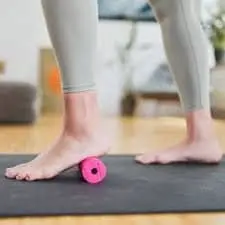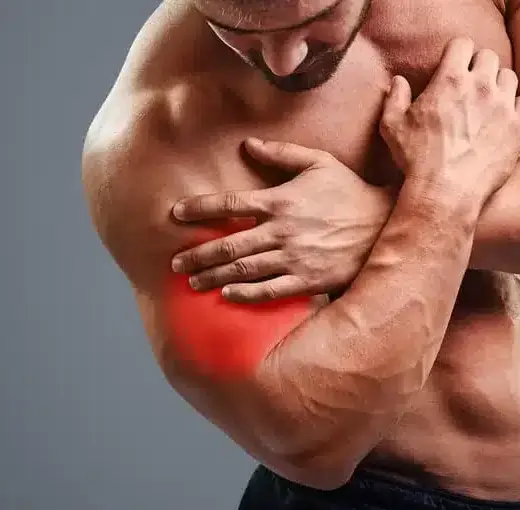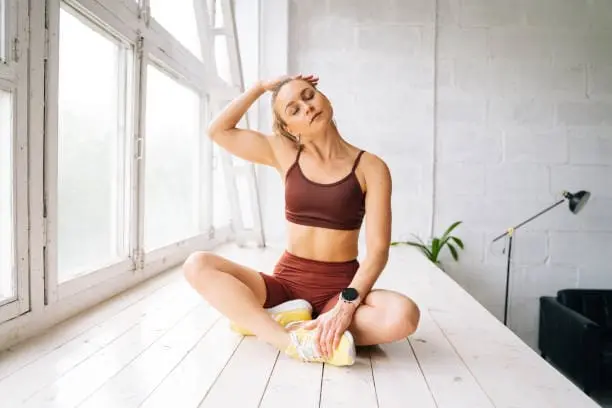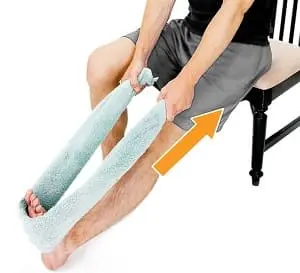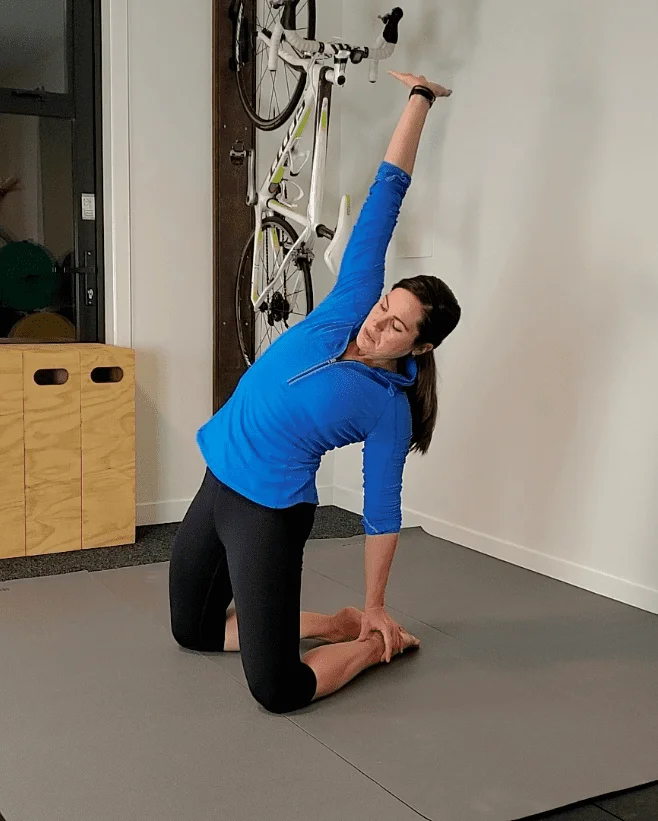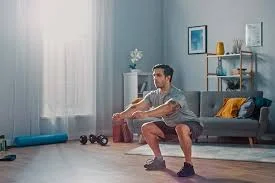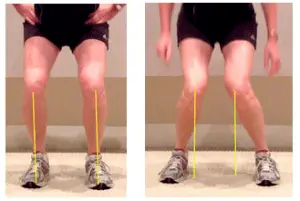13 Best Exercise for Heel Spur
Introduction:
Exercise for heel spurs is an important part of your treatment plan since it strengthens the heel area, relieves pain, and increases ankle joint mobility and flexibility.
The underside of the heel bone is where a heel spur, also known as a bone spur, develops. Heel spur exercises help you feel less pain and provide stretches that keep your calf muscles flexible.
Usually, heel spurs begin beneath and in front of the heel. They progressively affect other foot parts. They can grow in length by half an inch. They might only be observed in tests like x-rays and not always visible to normal vision. Not all heel pain is caused by heel spurs, and you may not always experience pain and swelling when you have the condition.
Causes:
- Age
As one age, the risk of developing heel spurs rises. As you age, your gait or walking pattern may vary, which could be related to it. This includes taking shorter strides, which may cause your feet to strain more.
- Gender
Compared to males, women may be more likely to get heel spurs earlier in life. Using high-heeled shoes could be a significant contributing element.
Heel spurs are also very common in people with plantar fasciitis. A bone spur may develop from the formation of a bony deposit at the tissue’s insertion site due to an ongoing inflammation of the plantar fascia.
- Arthritis
Damage to the joints and cartilage in arthritis can result in the development of heel spurs.
- Overweight
Carrying too much weight strains your feet and increases the risk of heel spurs.
Signs and symptoms:
- Heel Pain
- Swelling in the heel
- The affected heel area may feel warm
Exercise for Heel Spur:
To help reduce your symptoms, try these easy exercises. They might be performed several times during the day or all at once.
Seated calf stretch
- To begin, choose a comfortable seat on the floor.
- Secure the ends of the band with both hands while placing it beneath the arch of your right foot.
- When using the strap for pulling the top of your foot toward you, bend it toward your shin.
- Hold this position for a few seconds.
- Then return to your neutral position.
- Then relax.
- Repeat this exercise five to ten times.
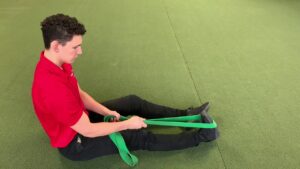
Toe splay
- Your feet should be lightly resting on the floor when you sit in a chair with a straight back.
- Toes should be spread as widely apart as is comfortable.
- Hold this position for a few seconds.
- Then return to your neutral position.
- Then relax.
- Repeat this exercise five to ten times.

Plantar flexion with resistance band
- While sitting, position your leg firmly in front of you.
- Wrap a resistance band on the heel of your foot
- holding one end in each hand.
- Press your foot into the band like you would a gas pedal.
- Hold this position for a few seconds.
- Then return to your neutral position.
- Then relax.
- Repeat this exercise five to ten times.
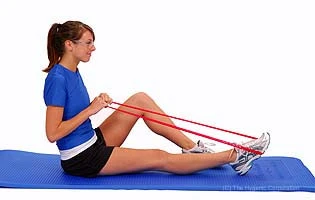
Towel curl
- Start with taking a seat on the chair.
- Make sure your feet and legs are parallel to one another and have their toes pointed forward.
- Spread out the towel and place a level foot on it.
- Keeping your heel down, flex your foot back and raise your toes.
- Extend your foot equally over the middle and both sides of the towel, keeping your heel on the fabric, and step out as far as you can.
- Use your arch and toes to maintain your heel in place while you press the towel in.
- Push the towel in your direction.
- Use all five fingertips to draw a wide circle just under the arch.
- You will be limited to moving a certain area of the towel with each extension and limitations.
- Then return to your neutral position.
- Then relax.
- Repeat this exercise five to ten times.
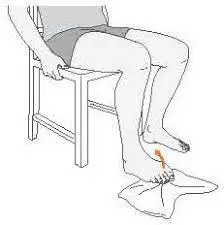
Calf stretch on a step
- While standing carefully at the step’s edge, position your heel to swing off the step.
- Lower your heel as much as you can over time.
- Hold this position for a few seconds.
- Then return to your neutral position.
- Then relax.
- Repeat this exercise five to ten times.
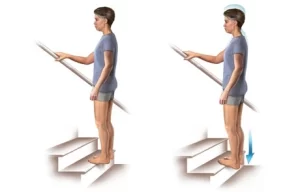
Heel raise
- You should keep your feet shoulder-width apart.
- Grab a chair or counter for support.
- Raise your heels so that you are standing on your heels.
- Hold this position for a few seconds.
- Drop your heels slowly after a few seconds.
- Then return to your neutral position.
- Then relax.
- Repeat this exercise five to ten times.

Foot roll
- Start with taking a standing position.
- On the side that hurts, place the roller beneath the calf.
- Repeatedly roll along your calf’s length.
- Then return to your neutral position.
- Then relax.
- Repeat this exercise five to ten times.
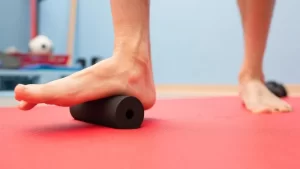
Seated plantar fascia stretch
- While sitting in a chair, cross one leg over the other, placing your ankle on the knee on the other side.
- Hold onto your ankle with one hand while pulling your toes back with the other.
- A stretch will be felt around the bottom of your foot.
- Hold this position for a few seconds.
- Then return to your neutral position.
- Then relax.
- Repeat this exercise five to ten times.
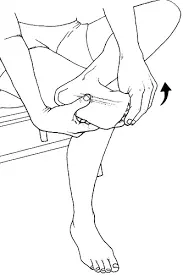
Wall squat calf stretch
- Your back should be firmly against a wall when you squat.
- With your ankles exactly underneath, your hips and knees should be in alignment.
- Raise both heels slowly off the ground.
- Hold this position for a few seconds.
- Then return to your neutral position.
- Then relax.
- Repeat this exercise five to ten times.
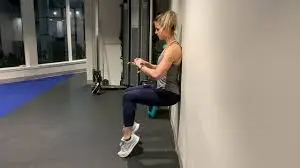
Ankle Inversion With resistance band
- First, make yourself comfortable sitting on the floor.
- Loop a resistance band around the bottom of your lower foot and wrap it over your top foot, connecting your left and right legs.
- Hold the end of the band tightly in your hand.
- With the resistance band wrapped around your upper foot, carefully move it farther from your lower foot.
- To do this, turn your ankle inward and hold this position for a few seconds.
- Then return to your neutral position.
- Then relax.
- Repeat this exercise five to ten times.
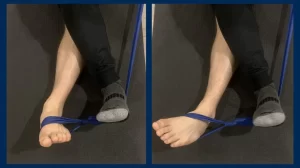
Foot flex
It’s really useful to do this easy stretch at the right moment, like when you wake up. Stretching your foot’s plantar fascia is known as foot flex. Overnight, the fascia on your planters gets tighter.
- Start by taking a sitting position on the ground.
- Your toes should be pulled back toward your shin with your hand.
- Hold this position for a few seconds.
- Then return to your neutral position.
- Then relax.
- Repeat this exercise five to ten times.
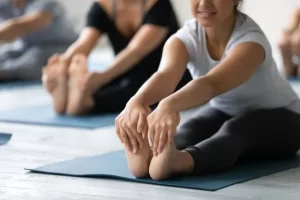
Heel drops
- Your workout step should be placed up against a wall.
- Position yourself on the step with your feet level and your upper body straight.
- For stability, grasp the wall.
- Slide your right foot toward the back of the step so that its heel is on the edge of the step.
- Bring your right heel down to the ground.
- Maintain your right knee straight for a few seconds and feel the pressure in your right calf.
- Then return to your neutral position.
- Then relax.
- Repeat this exercise five to ten times.

Wall calf stretch
- Position yourself in front of a wall.
- With one leg straight behind you and the other slightly bent forward, assume a lunge position.
- Lean forward and shift your hips toward the wall while keeping your back leg straight and your foot level.
- On the leg directly behind you, you will notice a stretch in your calf.
- Hold this position for a few seconds.
- Then return to your neutral position.
- Then relax.
- Repeat this exercise five to ten times.
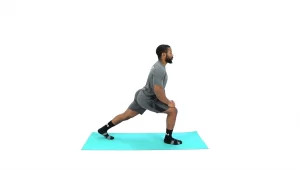
What safety measures should be taken when exercising?
- Don’t attempt challenging exercises.
- Exercise should be stopped as soon as the pain gets awful.
- When you’re exercising, straighten your posture.
- Try to avoid using any force or rapid motions when working out.
- The protocol calls for stretching before and after sets and for the number of repetitions specified for each exercise.
- Dress comfortably and loosely to improve your range of motion and encourage relaxation when working out. Avoid wearing anything too tight or stylish.
- Look for yourself and maintain your focus to prevent falling while working out.
- Stretching and bending gently is important.
- In between each exercise session, take a break.
- Although stretching the muscles in your tense joints may be difficult at times, it’s natural. It should not sting or feel like someone is stabbing you because stretching and activity are bad for you and worsen your illness.
- Be sure to stay hydrated.
When are you going to stop working out?
- Fever
- Stop exercising if it causes pain
- If numbness or pain are present
- Intense burning in the muscles
- Your health is not good
- Blurry vision
- Headache
Exercise avoid during heel spur:
- Jogging or Running
The two most common causes of heel pain are running and jogging. The effect of the foot being raised and hitting the ground with each step is many times greater than that of walking.
- High-Impact Sports
For teenagers and adults, basketball and hockey are two of the most popular sports. There’s a good chance that these high-impact sports will worsen heel pain. Due to the high pressure on the plantar fascia, the amount of running (which can induce heel pain), and the rapid changes in foot movement required for both games, there is a risk of tiny rips and injury to a strained fascia.
- Plyometric training
One of the worst activities for heels and arches recovering from heel spur conditions is plyometric training, commonly referred to as “jump training.” The workouts involve quick energy bursts that help the muscles gain power and control through different kinds of jumping. However, there is a danger that plyometric exercises could cause heel damage and muscular tension.
- Cardio-Dance and Aerobic Exercise
Aerobics and cardio dancing can be a lot of fun workouts. Since you put a lot of weight on your foot during cardio, the amount of impact and fast footwork can also create heel pain. Cardio dance and aerobics involve a lot of hopping and foot action, which can strain the fascia and create pain and inflammation.
Prevention:
Heel spurs can be prevented by wearing well-fitting shoes with shock-absorbing materials, sturdy shanks, and supporting heel counters. Additionally, you should warm up and stretch before engaging in any physical activity, choose shoes right for the activity, and take your time.
Avoid wearing shoes with a lot of wear on the soles or heels. Those who are overweight may find that losing weight helps prevent heel spurs.
Summary:
The calcaneus, or heel bone, has lumps of excess bone growth called heel spurs. Although they are frequently linked to other painful illnesses like plantar fasciitis and arthritis, bone spurs do not always cause pain. Heel spurs can cause pain and inflammation that worsens over time, making regular tasks challenging or even impossible.
Treating your symptoms as soon as possible will improve your chances of a full recovery. If they receive the proper care, almost all of the patients who suffer from heel spur pain recover without surgery.
Exercises for strengthening and stretching will help lessen heel spur symptoms. Even once your feet feel better, it’s a good idea to continue doing the exercises to prevent this from happening again. You should get medical help if your symptoms worsen or don’t get better with time. If your pain continues, becomes worse, or becomes severe, see your doctor.
FAQ:
Does walking alleviate heel spurs?
The more you walk, the less pain you usually experience. But after a long period of rest or walking, you can get pain again.
How may bone spurs be naturally reduced?
By wearing supportive footwear, taking in anti-inflammatory foods, and correcting your posture, you can lessen the conditions that lead to the creation of bone spurs. These behaviors help the body break down bone spurs on its own.
What causes heel spurs most often?
Your body reacts to pressure and stress on your foot’s ligaments and tendons by producing heel spurs. For instance, a heel spur is the result of your body’s reaction to the tension of plantar fasciitis.
Which is better for heel spurs, heat or ice?
Changing your lifestyle, such as lowering weight or altering your activities, can often help treat a heel spur. In many cases, pain can be relieved by resting and applying cold compresses or ice to the affected foot area.
Which exercise is most effective for heel spurs?
Foot roll
Heel raise
Calf stretch
Which footwear works well for heel spurs?
A strong, non-flexible sole can lessen the tension and stretch on the plantar fascia, which is frequently connected to heel spurs. It is advised to wear shoes with flexible and breathable materials. Shoes composed of mesh, canvas, suede, leather-like material, and microfiber all have these qualities.
If a heel spur is not treated, what would happen?
You may find it difficult to walk on your affected foot if you don’t get treatment for heel spur pain.
How does the sensation of a heel spur feel?
pain or tenderness in the heel of the affected foot that might be severe, dull, or chronic. swelling at the area near the base of the heel, where the spur is located. pain during barefoot or non-supporting footwear walking or exercise. a little, bony lump on the back or bottom of your heel.
Can you massage a heel spur?
Rubbing the sole helps reduce pain and relax the muscles around it. Moreover, massage can improve blood flow and help in the healing process.
Does a heel spur benefit from exercise?
Exercises for strengthening and stretching will help lessen heel spur symptoms. Additional therapies include medication, physical therapy, and, in serious cases, surgery.
How can I prevent the growth of heel spurs?
Exercise, specially constructed orthotics, medication for inflammation, and cortisone injections are some of the treatments for heel spurs and related conditions. Surgery can be required if conservative measures are unsuccessful.
References:
- May 12, Prajapati, D. (2023a). The Top 9 Heel Spur Exercises by Samarpan Physio. Physiotherapy Clinic of Samarpan. https://samarpanphysioclinic.com/9-definitive-heel-spur exercises
- On April 19, 2019, Cronkleton, E. 8 Heel Spur Pain-Relieving Exercises. Health Line. Exercises for heel spurs: https://www.healthline.com/health/sports-injuries
- B., Physiotherapist (2023, Dec 13). Heel Spur: Causes, Signs, Diagnosis, and Therapy. A mobile clinic for physical therapy. The management of heel spurs and physiotherapy can be found at https://mobilephysiotherapyclinic.in.
- On September 25, 2024, Cht, A. B. P. D. Try these ten heel spur exercises at home. Verywell Health. Heel-spur exercises: https://www.verywellhealth.com/5516757
- Image 9, In motion, balance. February 19, 2021. [Video] Wall squat with calf raise. YouTube. k9pQgB29Vzc https://www.youtube.com/watch?
- Image 10, John Schipilow. March 13, 2024. Rehab 49: Four-Way Ankle Theraband Exercises https://rehab49.com/4-way-ankle-theraband-exercises/
- Image 11, (2011, April 7). Nye, R. Stretching Techniques for Treating Foot Numbness | Livestrong.com. Pinterest. https://in.pinterest.com/pin/7107311900836992/
- Image 13, Courses for Origym Personal Trainers. March 27, 2021. Stretching Demo: How to Perform a Lunging Calf Stretch [Video]. YouTube. Rxmg957qC_s https://www.youtube.com/watch?

